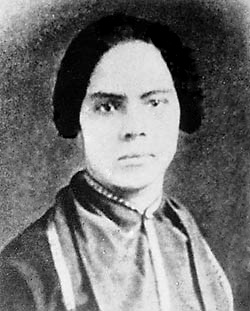Black Girls and Women Achieve
for Black History Month
Black History Month officially began in 1970, after Black United Students at Kent University proposed the idea the previous year as an expansion of Dr. Carter Woodson’s “Negro History Week,” first celebrated in 1926. President Gerald Ford officially recognized Black History Month six years later, at the US Bicenntenial, be encouraging Americans to “seize the opportunity to honor the too-often neglected accomplishments of black Americans in every area of endeavor throughout our history.”
Today, we want to highlight some incredible Black girls and women, past and present, in honor of Black History Month!

Mary Ann Shadd Cary (b. 1823) was the oldest of 13 children born to free Black parents. Her father worked for the famous paper, The Liberator, run by William Lloyd Garrison and helped enslaved Blacks escape to freedom as a member of the Underground Railroad. Following her her father’s footsteps, Cary was an abolitionist and became the first Black female newspaper editor.
Mary went to a Quaker school in PA, but moved to Canada when the Fugitive Slave Law passed, where escaped slaves (and often free Blacks) were forcibly returned to bondage. Cary encouraged other Blacks to move to Canada, where she started a weekly publication called The Provincial Freemen. Cary also opened a school that educated students of all races.
When the Civil War broke out, Cary returned to the US to help to war effort by recruiting soldiers for the Union Army. After the war, she earned a law degree from Howard University, making her the second Black women to do so. She fought for women’s suffrage with Susan B Anthony and Elizabeth Cady Stanton (despite the movement begin segregated), even testifying before the Judiciary Committee in the House, and was the first Black woman to vote in a national election. Her house in Washington, DC is a National Historic Landmark

Mary Eliza Mahoney (b. 1845) was the daughter of freed slaves. Her family moved north before the Civil War in hopes of finding a life with less racism. She attended one of the first integrated schools in Boston, which sparked her interest in learning and nursing. After working for fifteen years as a cook, maid, and washerwoman at the New England Hospital for Women and Children, Mahoney applied to a nurse training program. She successfully completed the rigorous training program and graduated in 1879, making her the first Black professional nurse.
Mahoney sought to abolish racism in the nursing field, as she believed all people should have opportunity without racial discrimination. To that end, she co-founded the National Association of Colored Graduate Nurses in 1908. Mahoney also supported women’s suffrage and was one of the first Bostonian women to register to vote.
She died in 1926 and is buried at Woodlawn Cemetery. Today, the Mary Mahoney Award is given to those to advance opportunities in nursing for marginalized groups. She was also inducted into the American Nursing Association Hall of Fame and the National Women’s Hall of Fame.

Mary Beatrice Davidson Kenner was a creative and inventive girl who came from a family of inventors. By age 12, she would explore that US Patent and Trade Office, looking to see if someone had already invented an idea she’d thought of.
Kenner briefly attended Howard University, before dropping out due to financial pressure. She worked odd jobs and continued to invent things. By 1957, Kenner saved enough money to file her first patent- a belt for sanitary pads. At this time, menstruators largely used cloth pads and rags. Kenner designed an adjustable belt with a built-in napkin, making leaks and stains less likely. A company was immediately interested in her idea, but did not pursue her product once they discovered that Kenner was Black.
Kenner continued inventing, undeterred. When her sister was diagnosed with MS, Kenner patented a tray and pocket that could attach to her sister’s walker so that she could carry thing. She filed five patents in total- more than any other Black woman in history. Kenner believed anyone could be an inventor: “Every person is born with a creative mind,” she said. “Everyone has that ability.”
Mary Kenner passed in 2006 at the age of 93.
View this post on Instagram
Marsai Martin (b. 2004) is one of the stars of black-ish, where she plays super-smart and wise beyond her years twin Diane Johnson. In 2016, Martin starred in An American Girl Story- Melody 1963. By 13 years old Martin produced and starred in “Little,” a comedy based on her idea. The story focuses on a woman who gets to relive her carefree youth.
So far, Martin has won six NAACP Image Awards nominations, two Screen Actors Guild Awards, and was named a Forbes 30 Under 30. She is the youngest person in Hollywood to produce a movie. In December 2019, she announced that she will be producing the movie Queen.
Erica Armah Bra-Bulu Tandoh (AKA DJ Switch) (b. 2007) is a twelve year old DJ from Ghana. DJ Switch learned how to DJ from a local DJ who taught her how to use a laptop. She chose the name because she is good at switching people’s moods to happy.
DJ Switch won Ghana’s annual DJ award and has already performed at the African Union, for the Gates Foundation, and for the French President.
Her dream is to be a gynecologist so that she can help women with childbirth in her community.
Resources
Mary Beatrice Davidson Kenner in VICE
Related Reading
The Experiences of a Black And Muslim Girl Living in America by Fatimata Cham
1 thought on “Celebrating Black Girls and Women for Black History Month”